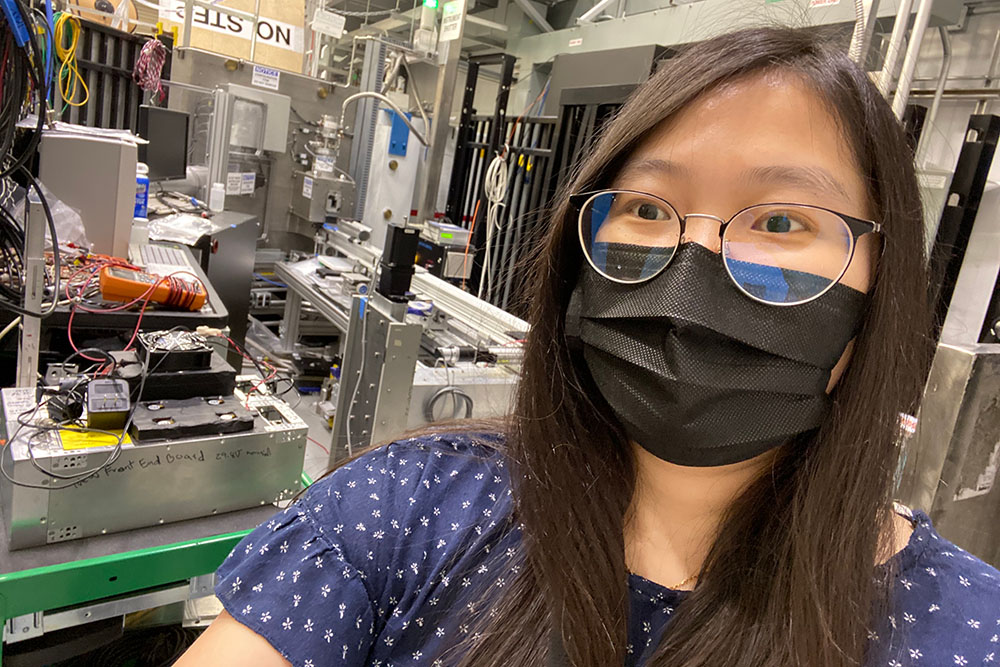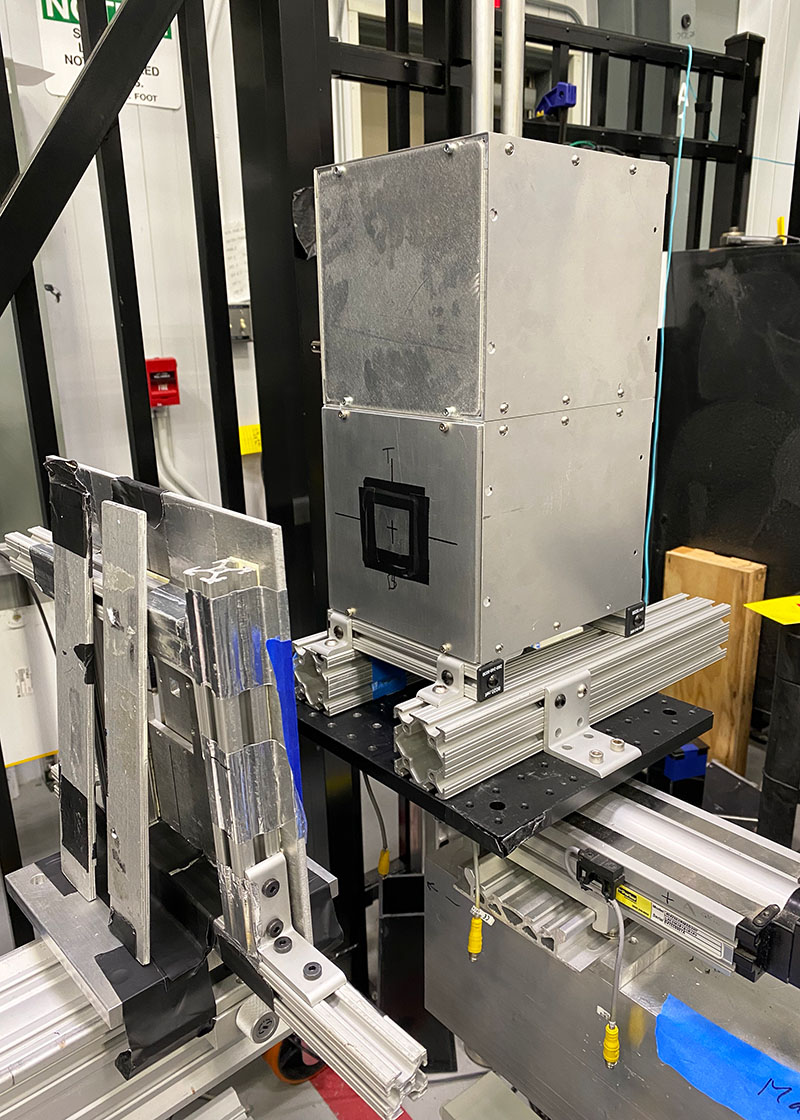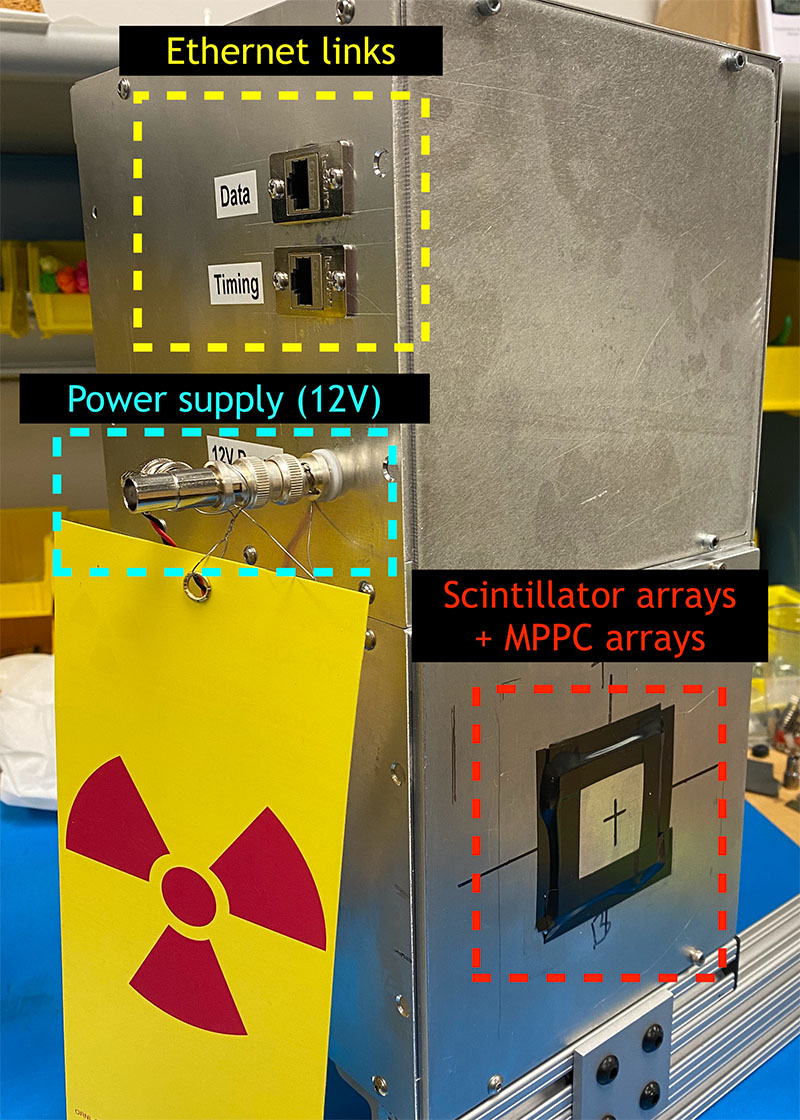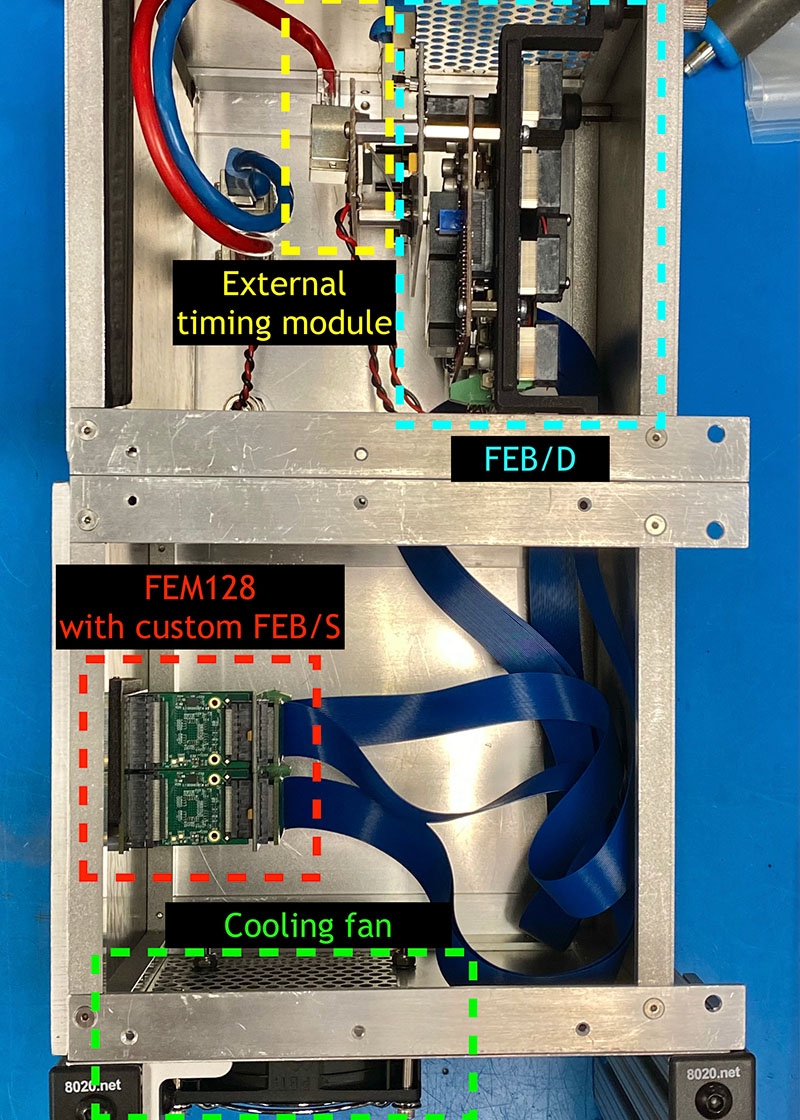
Su-Ann Chong at the Instrument Development Beamline CG-1A at the High Flux Isotope Reactor at Oak Ridge National Laboratory where the detector characterization tests were performed
Neutron reflectometers consist of specialized detectors designed to observe neutrons, which come from an extremely bright source like the Spallation Neutron Source (SNS) at Oak Ridge National Laboratory. Similar to how the human eyes can only safely observe an eclipse with the use of solar viewing glasses, or eclipse glasses, which greatly diminish the intensity of the emitted light, so too do typical neutron reflectometers observe bright sources. That is, until now.
Recent doctoral graduate Su-Ann Chong, in collaboration with the SNS detector development group, successfully demonstrated the first scalable neutron detector that is able to look directly at the world’s second brightest neutron source to observe it. This is the equivalent of taking off eclipse glasses for the eyes to perceive the phenomenon directly.
Her device demonstrates a breakthrough in scientific achievement that is expected to speed up the time it takes to do high-impact neutron science research by at least three orders of magnitude.
To maximize the rate capability of the neutron detector, Chong emphasized a pixelated design for the scintillator-based neutron detector.
“Every component of the detector system is completely pixelated, which means that every pixel of the detector is fully functional on its own, from the scintillator and photosensor to readout electronics,” said Chong. “In principle, the pixelated design is faster than multiplexing designs because the pixelated design focuses on performing tasks on a pixel level, meanwhile the multiplexing designs perform tasks across multiple pixels. The need to work across multiple pixels typically slows down the detector due to a longer processing time.”
The challenge of pixelated design comes with the need for a large number of electronics that scales with the number of pixels. To overcome this, Chong leveraged the use of small, compact ASIC, or Application Specific Integrated Circuit, chips that can handle a high number of channels. ASIC chips have an integrated circuit designed for specific user requirements.
- A view of Chong’s pixelated neutron detector at the Spallation Neutron Source
- Closer view of the neutron detector
- Side view of the neutron detector
“The instrumentation development led by Su-Ann produced the first scalable prototype system that can handle the high rate required of next-generation reflectometers,” said Professor and UCOR Fellow Jason Hayward, who served as Chong’s academic advisor. “The count rate of her detector is high enough that at the First Target Station at SNS, we were unable to measure the upper limit of the count rate. We are impressed with her achievement.”
Chong spent five years researching how to increase the rate for neutron detectors at the SNS, which is part of a scientific quest lasting two decades since the SNS has been in production.
Researchers at other neutron scattering facilities that are operating or being built around the world have also sought to make higher rate detectors, but the other comparable achievements so far are thought not to be scalable up to necessary sizes or they don’t meet the requirements as well. The difference between the existing neutron detectors and hers can be likened to the difference between a camera that can only take pictures one by one and a video camera that can capture a video sequence at a high frame rate.
Being able to record more neutrons at a higher frame rate is essential for allowing for more scientific research to take place, given a fixed amount of beam time available to the international community every year. Experiments are currently limited by the rate of the SNS detectors, so it might take days to complete a given experiment. A detector with a higher rate means the beam time for a particular experiment can be reduced to minutes or hours instead of days.
Post-graduation, Chong will continue work at the SNS, where scientists and engineers are ramping up their efforts to prepare for the installation of the STS. Her research has been submitted for peer-reviewed publication.


